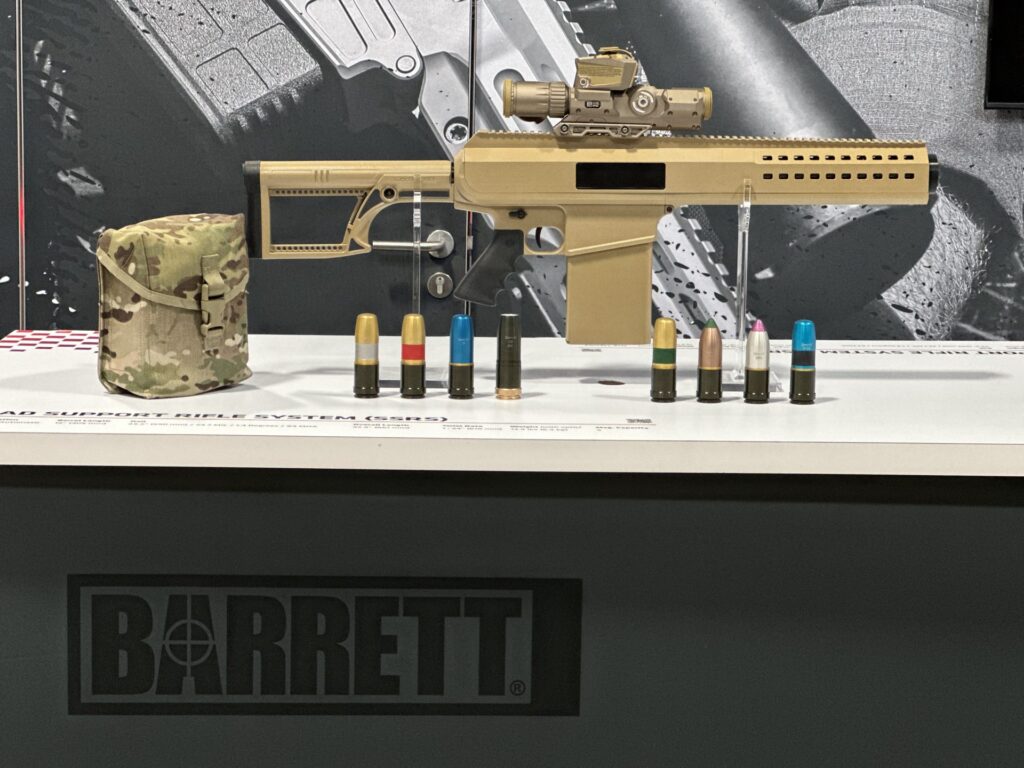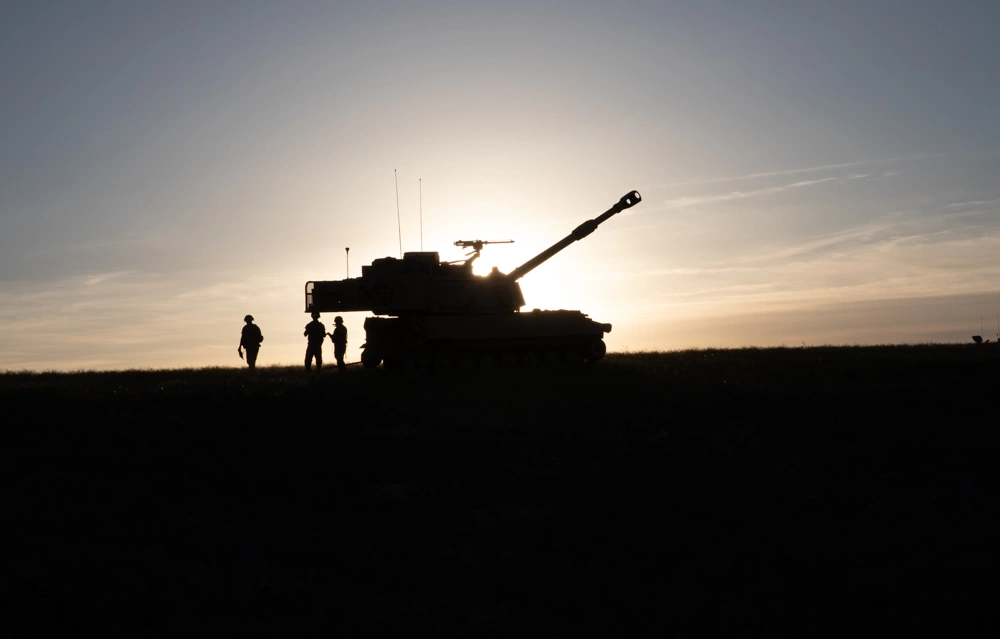This is why the M855A1 replaced the M855
- By Travis Pike
Share This Article

The M855, aka the SS109 cartridge, has a fascinating history for a projectile design that sucks. It’s so odd that the round lasted so long in service that we couldn’t or didn’t replace it sooner.
When we talk bullets and rifles, we often get wrapped up in the caliber, but we don’t talk much about the design of the projectile. We all know the current standard issue round in the United States military is 5.56. However, which 5.56 is it? Several exist, and the various loads differ substantially between them.
That tiny little bullet at the end of the cartridge can differ wildly depending on the mission and rifle. Designated marksmen rifles use a different projectile than the general infantry. We can tailor the 5.56 to work for numerous tasks, but the M855 worked for almost none.
Why the M855
In 1970, NATO wanted to standardize a rifle caliber. The United States ditched the 7.62 NATO for the 5.56, and NATO took notice. From 1977 to 1980, a series of tests were conducted with numerous small caliber, fast, little rounds designed for modern assault rifles. These included some odd ducks like the 4.7x33mm caseless. These rounds faced off against the American 5.56 and a 5.56 load by Belgium known as the SS109.
As usual, we all couldn’t agree on a rifle, but we could compromise on a caliber and a load. This was to be the SS109. This round was designed initially to increase the range and effectiveness of the Belgian Minimi, which would become the M249 SAW. The design used a 62-grain projectile that wore a steel “penetrator” tip but had a lead rear.

The penetrator tip did not make the round an armor-piercing projectile. Instead, having Soviet helmets in mind, they designed the round to penetrate 3.5mm of mild steel at 600 meters. The global threat at the time was the Soviet Union, and the round reflects that.
The United States military designated the round as the M855, and it became the service cartridge of the U.S. military and most of NATO. Yet, a round designed to pierce Soviet helmets turned out to be rather ineffective at everything else.
Related: What if the Soviets had invaded Europe? ‘Combat Mission: Cold War’ aims to find out
Why the M855 failed
The fast little 5.56 round kills an enemy by yawing and fragmenting. When the bullet yaws, it’s essentially spinning bottom over top repeatedly, creating a ton of damage inside the body. When it fragments, the round breaks into several pieces, and those pieces cause additional damage.
The problem is that M855 tended to only fragment and yaw at right angles. If a round did not hit at the correct angle, it would fail to yaw and fragment and instead pass clean through the opponent. It’s also worth noting the round was made for a 20-inch barrel. When the military trimmed the M16 into the M4, they lost velocity.

This velocity loss further lowered the round’s ability to yaw and fragment. In the Global War on Terror, the M855 fired from an M4 nose-dived in effectiveness beyond 150 meters. With rifles and SAWs, the performance dived beyond 300 meters. The reason being is that the 5.56 is velocity-dependent.
5.56 rounds fragment reliably when moving at 2,500 FPS or faster. From an M16 or SAW, the round stayed above 2,500 FPS out to 200 meters, and from an M4, it barely makes it 150 meters at 2,500 FPS.
Even in close quarters, the round would often fail to yaw; this would create situations where more than two rounds were needed to stop a threat. While the M855 featured a steel penetrator, it tended to fail to penetrate through a windshield and stop a threat, as the steel penetrator might not be perfectly centered or placed consistently between projectiles. This also created balance issues and potentially inconsistent accuracy.
Related: M1919: The machine gun that just wouldn’t quit
Enter the M855A1
The M855 was sub-par and it’s a surprise we used it for so long. However, after fighting the GWOT for 20 years, the situation became hard to ignore. Special operation units moved to a new type of enhanced ammo known as the Mk318, which the Marine Corps also adopted for a short period.
The Mk318 was a great round, but the military wanted something more affordable. So, the M855A1 became the round of choice.

The M855A1 tends to yaw more consistently than the standard M855 and works better at increased distances. The round can even penetrate up to 9.5mms of mild steel. Production of the round uses a reverse drawn jacket to make it more stable and give it increase accuracy.
The M855A1 matches the M855 almost perfectly in terms of the ballistic path. This allows Soldiers, Marines, Airmen, and Sailors to train with the M855 but use the more expensive, lead-free M855A1 for deployments. The M855A1 seems to resolve the issues with the M855 and even performed well in National High Power Rifle matches at Camp Perry.
No free lunch
While the M855A1 seems to resolve many issues with the M855, there is no such thing as a free lunch. For one, the M855A1 chewed up the feed ramps on the Marine Corps M27. This resulted in the need for a new magazine that kept the steel penetrator from hitting the feed ramps. The PMAGs adopted by the Marine Corps resolved this issue.
Further, while the M855A1 claims to fix the performance issues of the M855, there hasn’t been testing outside of the Army. While I’m not claiming the Army is lying, I’d like to see independent testing by folks whose careers might not rest on the adoption and design of a new projectile. Even so, at least the Army and military as a whole recognized the issues with M855 and worked to fix the problem.
Read more from Sandboxx News
Related Posts
Sandboxx News Merch
-

‘AirPower’ Classic Hoodie
$46.00 – $48.00 Select options This product has multiple variants. The options may be chosen on the product page -

‘Sandboxx News’ Trucker Cap
$27.00 Select options This product has multiple variants. The options may be chosen on the product page -

‘Kinetic Diplomacy’ Bumper Sticker (Black)
$8.00 Add to cart

Travis Pike
Travis Pike is a former Marine Machine gunner who served with 2nd Bn 2nd Marines for 5 years. He deployed in 2009 to Afghanistan and again in 2011 with the 22nd MEU(SOC) during a record-setting 11 months at sea. He’s trained with the Romanian Army, the Spanish Marines, the Emirate Marines, and the Afghan National Army. He serves as an NRA certified pistol instructor and teaches concealed carry classes.
Related to: Gear & Tech

The Switchblade, loitering munitions, and the new terrifying face of warfare

5 ways to prepare and survive the Marine Corps boot camp

Barrett’s Squad Support Rifle System will make infantry squad deadlier

The unique world and uses of howitzers
Sandboxx News
-

‘Sandboxx News’ Trucker Cap
$27.00 Select options This product has multiple variants. The options may be chosen on the product page -

‘AirPower’ Classic Hoodie
$46.00 – $48.00 Select options This product has multiple variants. The options may be chosen on the product page -

‘AirPower’ Golf Rope Hat
$31.00 Select options This product has multiple variants. The options may be chosen on the product page -

‘Sandboxx News’ Dad Hat
$27.00 Select options This product has multiple variants. The options may be chosen on the product page
